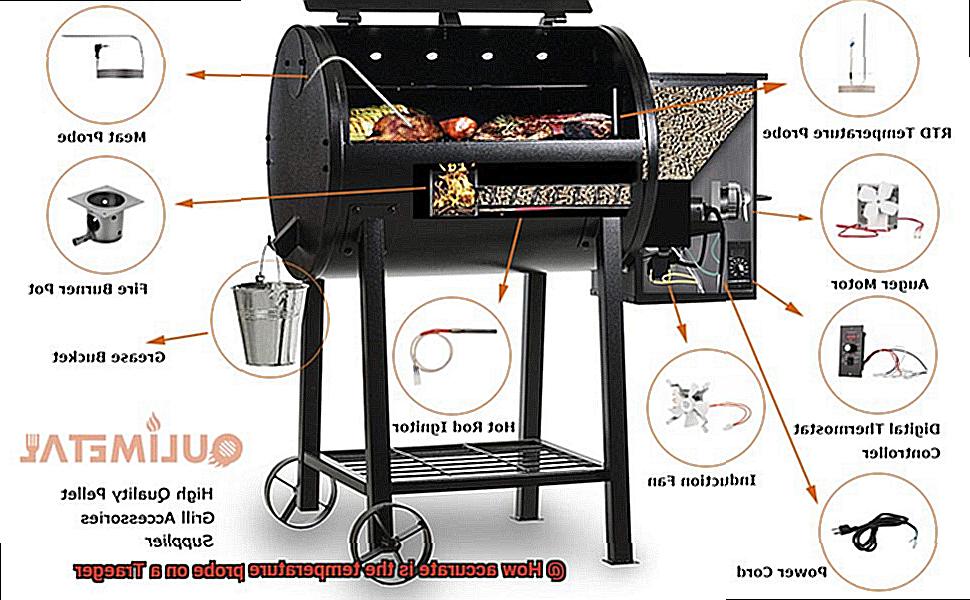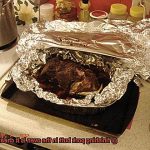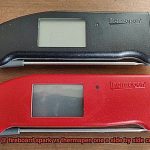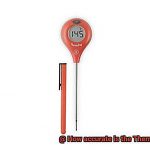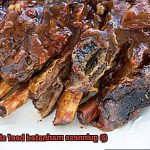Do you ever feel like you’re taking a shot in the dark when it comes to grilling? Are you tired of playing guessing games with your food’s temperature? Fear not, because I have the solution for you. In this blog post, we’ll delve into the accuracy of temperature probes on Traeger grills, so you can cook with confidence and savor every bite.
Traeger grills are renowned for their precise cooking abilities. But how accurate are their temperature probes? The answer is: it depends. There are two types of probes on Traeger grills: the meat probe and the pit probe. The meat probe monitors internal meat temperature, while the pit probe measures the grill’s internal temperature.
The accuracy of these probes hinges upon several factors. Firstly, the quality of the probe itself is crucial. Cheaper probes tend to be less accurate than higher-end models. Secondly, where you place the probe can also impact its accuracy. If it’s not in precisely the right spot, it can give misleading readings.
But don’t fret- there are ways to ensure your Traeger’s temperature probes read accurately. By using another thermometer to double-check readings and correctly positioning your probes, you can trust that what your grill displays is spot-on.
Stay tuned as we dive deeper into how to enhance your Traeger’s temperature probe accuracy for faultless BBQ every time.
Contents
What is a Traeger Grill?
Look no further than a Traeger Grill, the wood pellet grill designed to cook any food to perfection. These grills are a popular choice among outdoor cooking enthusiasts, known for their durability, versatility, and unparalleled flavor.
Invented in 1985 by Joe Traeger, these grills use a combination of wood pellets and electricity to create heat and smoke, infusing your food with a unique and delicious flavor that will leave your taste buds wanting more. Whether you’re cooking meats, vegetables or desserts, a Traeger Grill has got you covered.
One of the standout features of a Traeger Grill is its temperature probe. This advanced system allows you to set and maintain the perfect temperature for your food, ensuring that each meal is cooked evenly and to perfection. While some may question the accuracy of the temperature probe, it all comes down to proper usage.
To get the most accurate readings from your temperature probe, there are a few important factors to consider. Firstly, ensure that your thermometer is of high quality and properly calibrated. Additionally, the placement of the probe within the grill is crucial. It should be placed in the thickest part of the meat, away from any bones or fat. External factors such as wind and humidity can also affect the accuracy of the temperature probe.
While it’s always a good idea to double-check your readings with a separate thermometer to ensure perfect results every time, with a Traeger Grill’s advanced temperature monitoring system, you can trust that your meals will come out delicious every time.
How Does the Temperature Probe Work?
That’s where the temperature probe on a Traeger grill comes into play. Let’s dive deeper into how this mighty tool works.
At its core, the temperature probe is a small electronic device that consists of two main components: a metal probe and a wire. The metal probe is inserted into the meat or placed on the grill grates to measure either the internal temperature of your food or the ambient temperature of the grill.
Once inserted, the metal probe measures the temperature and sends an electrical signal to the grill’s control system through the wire. The control system then compares that temperature to the desired cooking temperature and adjusts the heat accordingly. This ensures that your food is cooked to perfection every time.
But why is this so important? Well, let’s say you’re cooking meat, for example, you want it cooked through but not overcooked. The temperature probe helps ensure that your meat is cooked just right, without any guesswork involved.
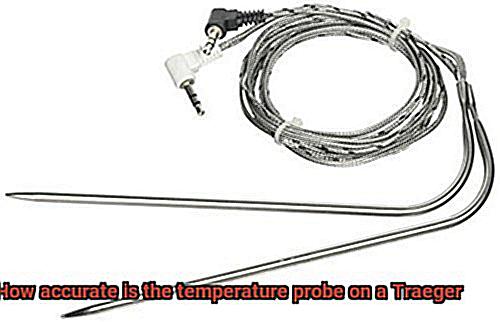
The temperature probe has even more benefits. It can help you maintain a consistent temperature throughout the cooking process. This is especially important when grilling for extended periods as external factors like wind and humidity can cause fluctuations in temperature. By using a temperature probe, you can make sure your grill stays at a consistent temperature, resulting in evenly cooked food.
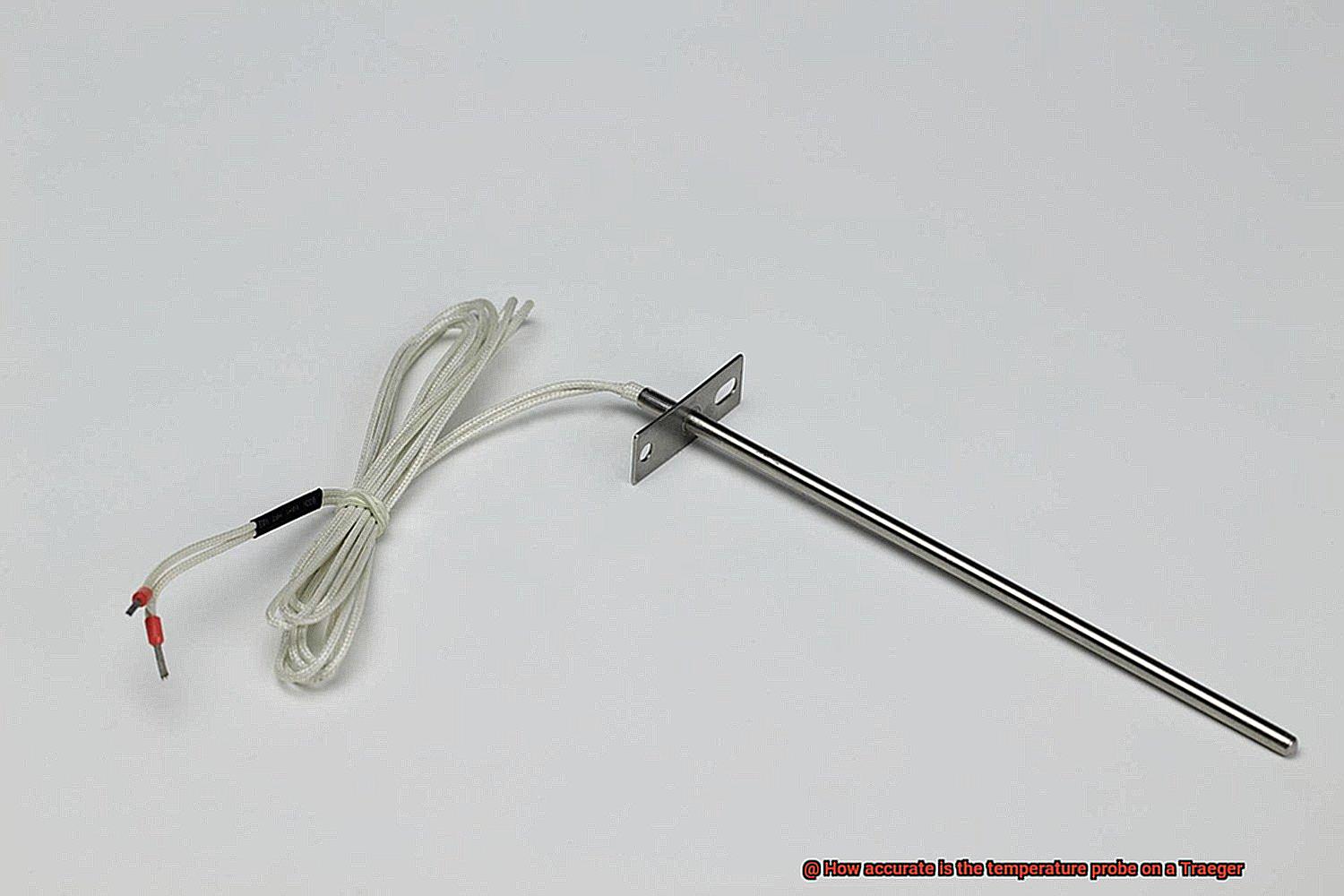
Factors That Affect the Accuracy of the Temperature Probe
The temperature probe on your Traeger grill can be a lifesaver in achieving perfectly cooked meat. However, did you know that there are several factors that can impact the accuracy of your temperature probe? Let’s explore these factors together and ensure your next grilling experience is a success.
First and foremost, proper placement is key. It is essential to insert the probe into the thickest part of the meat or fish to obtain an accurate reading. Placing the probe in the wrong location can result in inaccurate temperature readings and lead to an unsatisfactory grilling experience.
Another crucial factor that affects accuracy is the quality of the temperature probe itself. Investing in a high-quality temperature probe will give better and more consistent results than a cheaper, lower quality one. Don’t skimp when it comes to temperature probes; they are an essential tool for grilling.
External factors such as wind, humidity, and altitude also play a role in the accuracy of temperature probes. Wind can cause a fluctuation in temperature, while humidity can affect cooking times and may also cause inaccurate temperature readings. Altitude can cause a decrease in air pressure, which can impact cooking times and temperatures.
Last but not least, maintenance is vital. A dirty or damaged temperature probe can lead to inaccurate readings. To ensure accurate readings, clean the probe after each use and replace it regularly if necessary.
Quality of the Thermometer
Attention all grill masters. If you’re looking to achieve the perfect sear on your meat, you know that a reliable thermometer is key. But did you know that the quality of your thermometer can make all the difference?
Traeger grills come equipped with a probe-style thermometer, which measures temperature by inserting a metal probe directly into the meat. This method is more accurate than traditional dial thermometers found on other grills, making it an essential tool for maintaining temperature control.
However, some users have reported concerns about the quality of the thermometer on Traeger grills. Inaccurate temperature readings can lead to overcooked or undercooked food, ruining the entire grilling experience.
One possible explanation for this variance in temperature readings could be due to the placement of the probe. Ensuring that the probe is inserted into the thickest part of the meat, away from any bones or fat, is essential for accurate readings. Taking the time to find the perfect spot to insert your probe will make all the difference in achieving perfectly cooked meat every time.
Another crucial aspect of maintaining accurate temperature readings is keeping your probe clean and free from any debris before inserting it into the meat. Any leftover food or moisture can affect the accuracy of your thermometer. So, make sure to clean your probe thoroughly after each use to avoid any potential issues.
Proper Placement of the Probe
As an expert on this topic, I’m here to share some important tips to help you achieve that perfect cook on your Traeger grill.
The placement of the temperature probe is crucial to obtaining an accurate reading, which affects the cooking time and outcome of your food. Therefore, always insert the probe into the thickest part of the meat to ensure an accurate internal temperature reading. Whether it’s a juicy steak or a succulent turkey, this rule applies across all cuts of meat.
However, it’s important to note that the placement of the temperature probe can vary depending on the cut of meat you’re cooking. For example, you should insert the probe into the thickest part of the breast for chicken breasts. In contrast, for whole chickens or turkeys, aim for the thickest part of the thigh.
Additionally, if you’re using bone-in meat, avoid inserting the probe too close to the bone as this can affect temperature accuracy. The goal is to get an accurate reading of the meat itself, not the bone.
Lastly, make sure that your probe isn’t touching anything else in the grill. It should be completely immersed in the meat without coming into contact with any other surfaces or parts of the grill that could affect its accuracy.
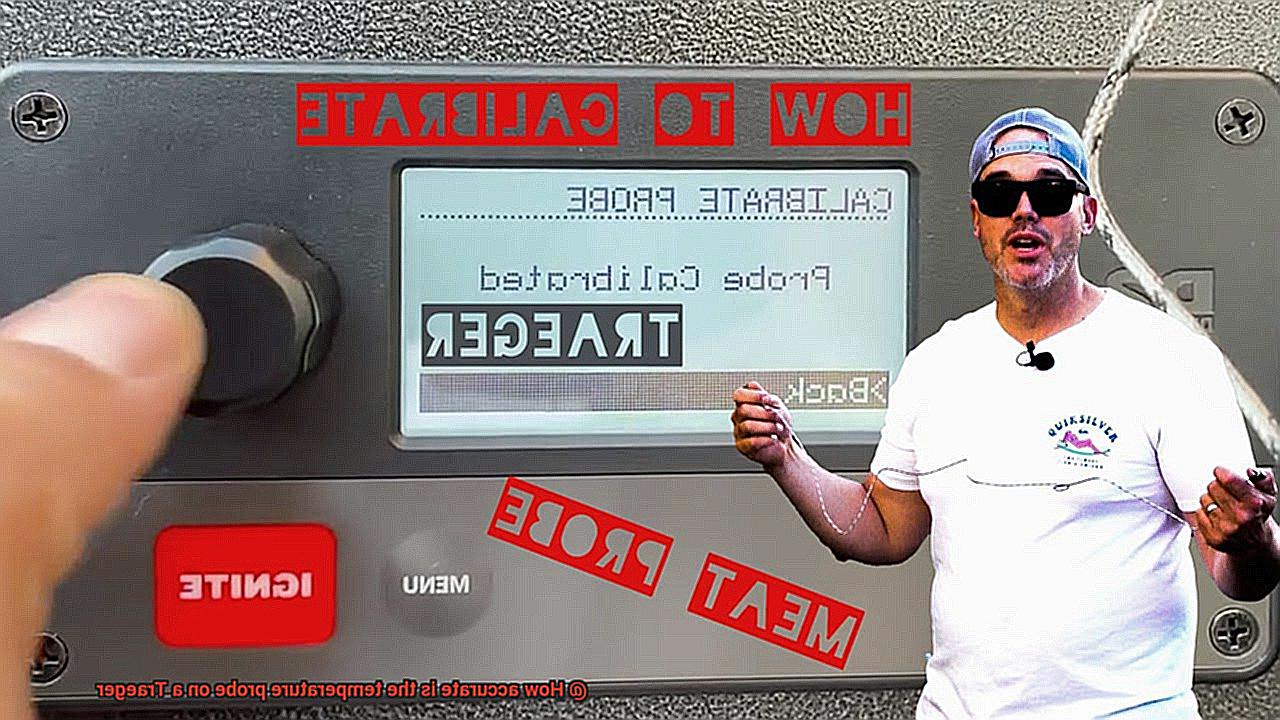
External Factors that Affect Accuracy
In this article, we’ll explore how wind, sunlight, humidity, and altitude can affect the accuracy of temperature probes on a Traeger grill.
Let’s start with wind. Wind can cause fluctuations in temperature readings, especially if the probe is exposed to direct wind. The air temperature can also drop, resulting in lower temperature readings on the probe. A simple solution is to shield your probe from direct wind or use a windbreak to maintain consistent cooking temperatures.
Next up is sunlight. Direct sunlight can heat up your probe and cause it to register a higher temperature than it actually is. To avoid this issue, it’s recommended to place your probe in a shaded area or use a cover to ensure more accurate temperature readings.
Humidity is another factor that can impact the accuracy of temperature probes. High humidity levels can cause moisture to accumulate on the probe, leading to higher temperature readings than the actual cooking temperature. To prevent this issue, ensure that your probe is dry before use and consider using a cover.
Lastly, altitude can affect the accuracy of temperature probes. At higher altitudes, atmospheric pressure decreases, causing water to boil at a lower temperature. This means that cooking temperatures will be lower at higher altitudes compared to sea level. Traeger grills come with altitude adjustment settings that allow users to adjust cooking temperatures based on their altitude for consistent cooking results.
Tips for Ensuring Accurate Readings
If you’re looking for the perfect temperature on your Traeger grill, then you’re in luck. Achieving accurate readings is crucial to achieving the perfect cook. Here are five tips for ensuring accurate temperature readings on your Traeger grill.
Calibrate your thermometer
Before firing up your Traeger grill, make sure to calibrate your temperature probe. This means placing the probe in boiling water for several minutes to ensure it reads the boiling point at your elevation. Proper calibration ensures that you’re starting with accurate readings before even placing your food on the grill.
Probe placement
The location of the probe can affect the accuracy of the reading. Make sure to insert the probe into the thickest part of the meat, away from bones or fat. This will give you an accurate reading of the internal temperature of the meat.
Avoid opening the grill too frequently
Avoid opening the grill too often, as this can cause fluctuations in temperature and affect the accuracy of your readings. Preheating your grill before adding your food can help ensure a consistent temperature throughout the cooking process.
Clean your probes
Over time, grease and food debris can build up on your Traeger’s temperature probes, causing inaccurate readings. Make sure to clean your probes after each use with hot soapy water or a non-abrasive cleaner.
Use a backup thermometer
While the Traeger’s built-in temperature probe is highly accurate, it’s always a good idea to use a meat thermometer as a backup to ensure your food is cooked to perfection.
RvDPJ1SI-XY” >
Conclusion
In summary, Traeger grills are renowned for their precision cooking abilities, and the temperature probes play a significant role in achieving perfect results. However, to ensure accurate readings, several factors need consideration. The quality of the probe itself, proper placement, external factors like wind and humidity, and maintenance all impact the accuracy of temperature probes.
Investing in high-quality temperature probes is essential for accurate internal temperature readings. Proper placement of the probe into the thickest part of the meat ensures an accurate reading. External factors such as wind, sunlight, humidity, and altitude can also affect the accuracy of temperature probes. Shielding your probe from direct wind or using a cover ensures more precise temperature readings.
To achieve accurate readings on your Traeger grill, calibrating your thermometer before firing up your grill is crucial. Frequent opening of the grill can cause fluctuations in temperature; thus, it’s best to avoid doing so. Cleaning your probes after each use with hot soapy water or a non-abrasive cleaner is recommended for optimal performance. Additionally, using a backup thermometer provides added assurance.
By following these tips and enhancing your Traeger’s temperature probe accuracy for faultless BBQ every time, you can cook with confidence and savor every bite.

